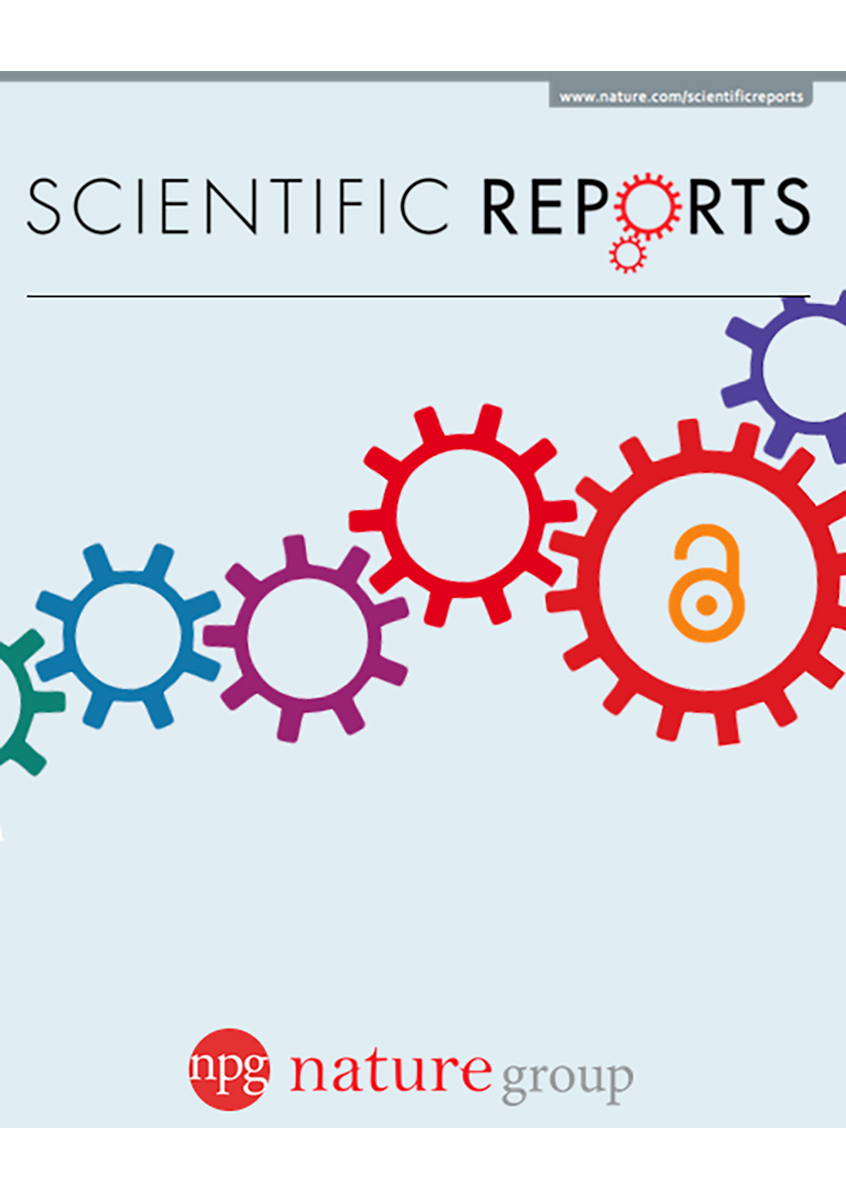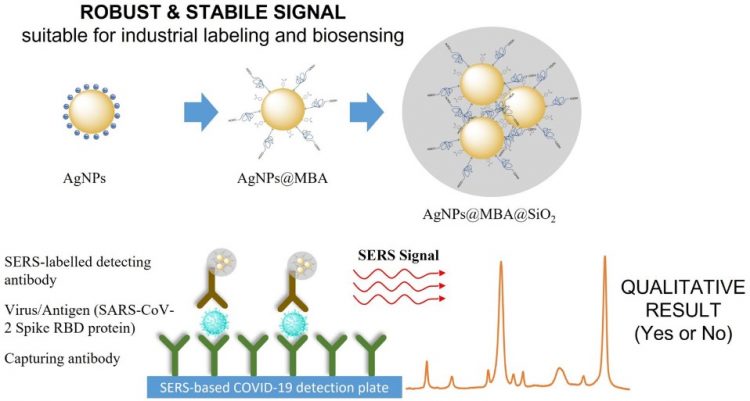Nano‑agglomerates as stable SERS reporters for labelling

For an accurate and timely healthcare diagnosis, biosensors on the base of SERS are very necessary. However, clinical SERS is hampered by unreplicable SERS platforms. Spanish scientists in Scientific Reports thought up a synthetic process to produce labeling-ready, highly-SERS performing, stable, repeatable, and robust nanocomposites for SARS‑CoV‑2 detection without prior sample treatment.
Due to the control of silver nano-agglomerates authors increased the number of hot spots leading to the incredibly high Raman enhancement. These nano-agglomerates were enclosed in a silica shell to shield them from oxidation, contamination, and to increase their stability for a long time. Scientists used reverse transcription polymerase chain reaction (RT-PCR) as the standard diagnostic test for SARS-CoV-2. Researchers co-adsorbed and covalently bound onto the metallic Ag nanoparticles (AgNPs) surfaces a SERS probe 4-mercaptobenzoic acid (MBA), and encapsulated them within a homogenous layer of silica. Scientists developed a SERS-based diagnostic kit followed a sandwich-based assay, which includes a substrate functionalized with capture antibody, antigen for diagnosis and signal amplification system (see Fig.1). The readout is the SERS signal given by the AgNPs@MBA@SiO2 which identifies the antigen upon their surface functionalization with the antibody. To sum up, authors developed a SERS-based diagnostic model kit for the quick, sensitive, and targeted detection of SARS-CoV-2 antigens. Overall, these nanoagglomerates have a wide range of applications, including industrial labeling, environmental science, and clinical biosensing, all of which call for a quick, in-situ, sensitive, and focused readout.
Figure 1. Scheme of the rational and controlled synthesis of robust and stabile SERS encoded plasmonic-silica nanocomposites for enhanced, fast, sensitive, and selective labeling and biosensing. Adopted from here.

